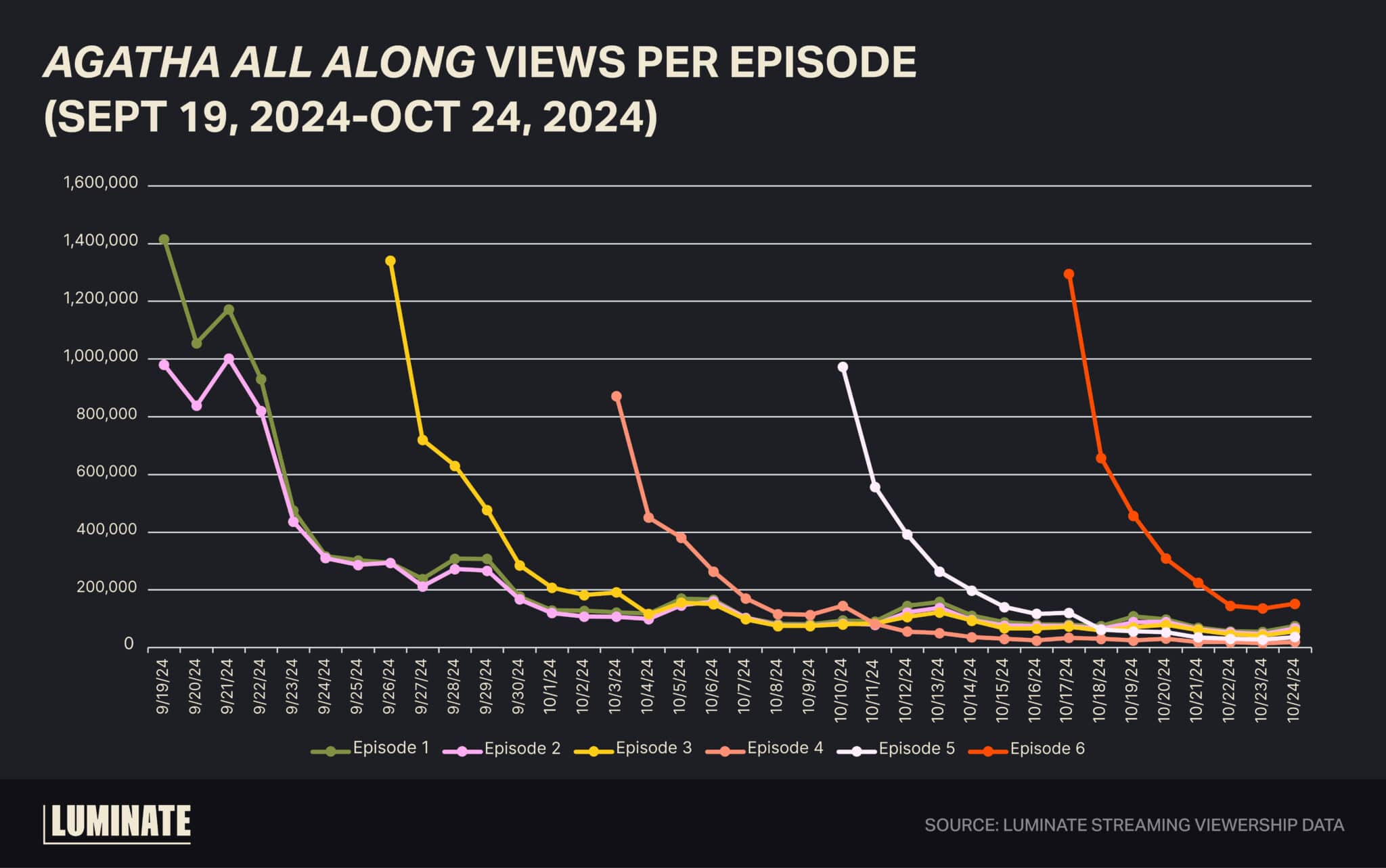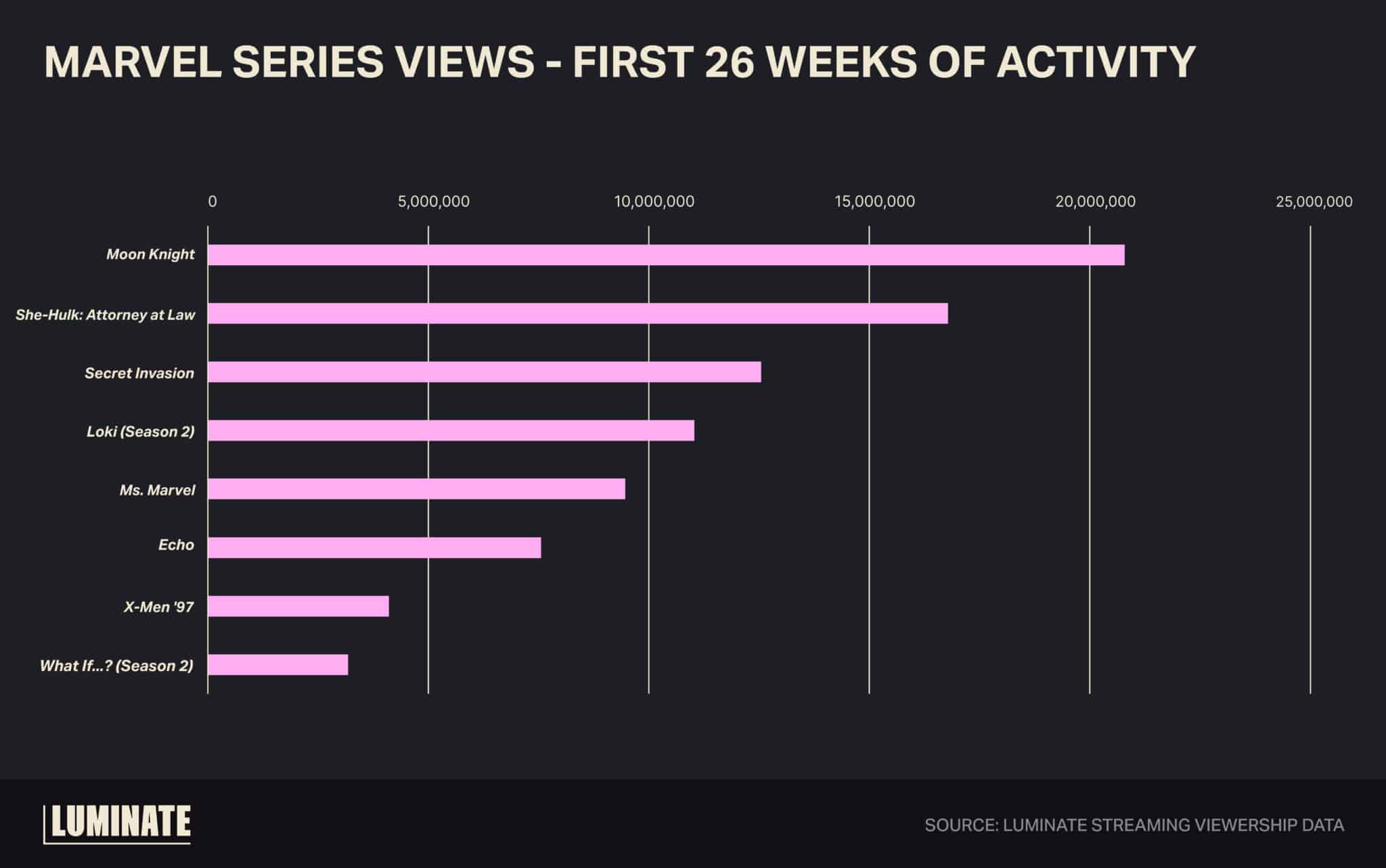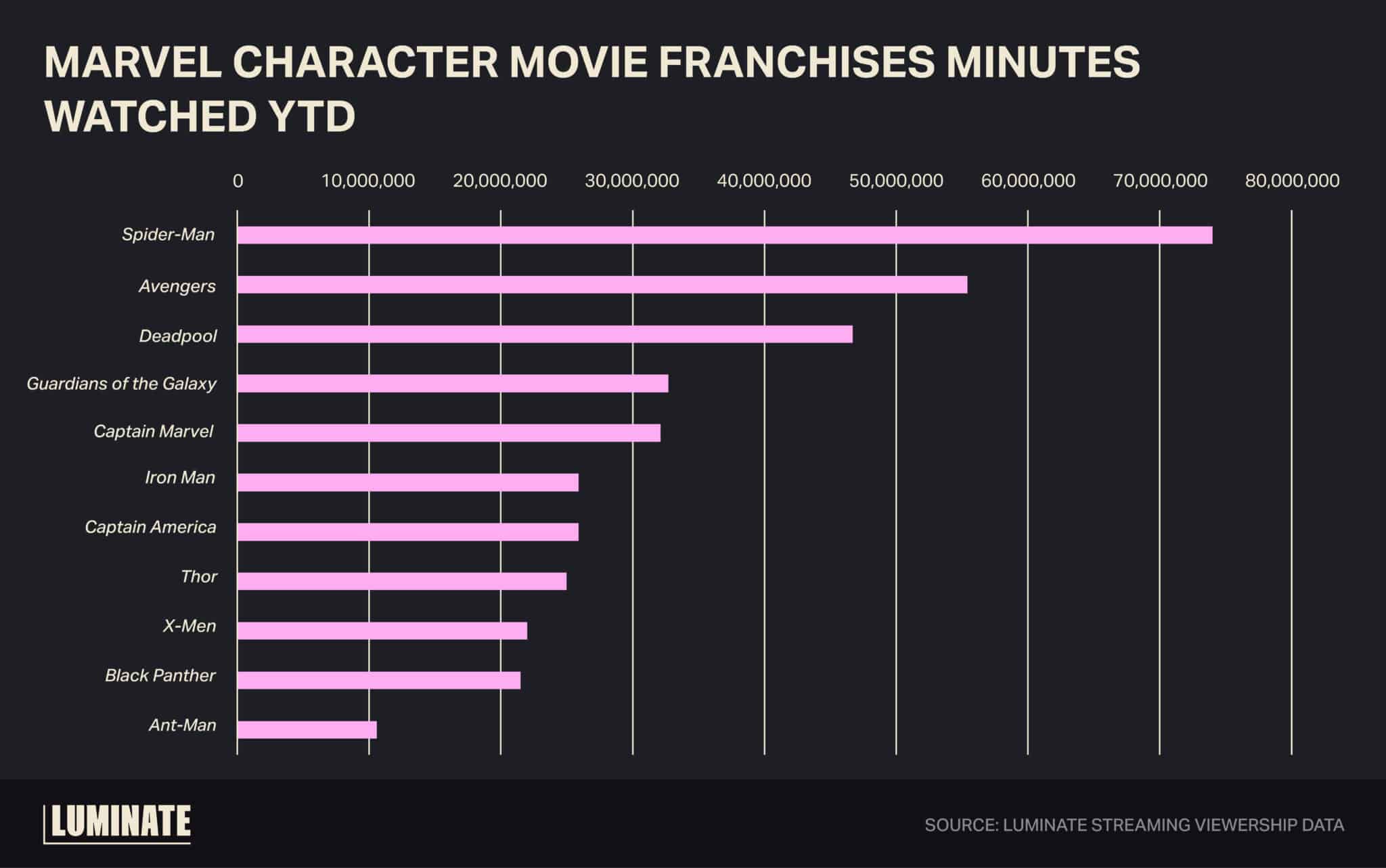When the most successful movie producer of the century decided to double down on TV, it seemed like an easy bet. Marvel had already enjoyed TV successes with ABC hit Agents of S.H.I.E.L.D. and shows on Netflix led by Daredevil, though those were produced by a television team largely outside of the purview of Marvel hitmaker Kevin Feige. To support Disney+, the movie studio took over producing TV shows, bringing its iconic characters to the small screen while introducing new characters to join Marvel’s heroes on the big screen.
WandaVision was an initial success for Disney, but it took over three years to follow up with its spinoff, Agatha All Along. While the smaller-scope show has dropped out of the Top 10 in the Variety Streaming Originals Chart powered by Luminate, it has managed to maintain viewership leading up to the two episode finale released this week.

While there was a slight dip in views after episode 3, the long tail of the viewership for the first 3 episodes has viewers catching up and sticking with the show. This is a big difference from Disney’s Star Wars series The Acolyte earlier this year, which opened well but lost significant viewership in subsequent weeks.
In hindsight, Moon Knight was a success for Marvel, with similar viewership to Ahsoka and the best viewership for a Marvel show since 2022. Despite mixed fan reaction, She-Hulk: Attorney at Law was also a solid performer, though Marvel has trended down with its 2023 releases of Secret Invasion, Loki Season 2 and the animated What If…?
Loki season 2 is particularly surprising — despite solid critical reception, it was beaten for viewership by the largely panned Secret Invasion. Regardless, neither show would be considered a massive hit when factoring in the budgets and movie star talents of Tom Hiddleston and Samuel L. Jackson, respectively.

Marvel’s focus has been moving characters in between both film and TV, whether that be the Scarlet Witch moving from WandaVision to Doctor Strange in the Multiverse of Madness, The Falcon and the Winter Soldier minting Sam Wilson as the new Captain America for his own film coming next year or Ms. Marvel introducing Kamala Khan, who next appeared as a co-lead of The Marvels.
While multiple factors can impact a TV franchise’s potential, the strategy of moving MCU characters between film and TV does not seem to have helped establish a viable TV franchise. This could change, citing Agatha All Along’s solid performance and an untitled Vision series that both further the story of WandaVision. Marvel has also already ordered a second season of the upcoming Daredevil: Born Again, set to begin production next year. In addition, Marvel Television is giving Black Panther: Wakanda Forever standout Ironheart her own series and launching a new character, Wonder Man.
On the film side, the Marvel Cinematic Universe shows a template for successfully creating sub-franchises under the MCU banner with multi-film series like Iron Man, Thor and Guardians of the Galaxy.

Note: This chart captures minutes watched for main entry films in each character (or group) franchise. Avengers only includes the Avengers-titled films, not every film featuring an Avengers character.
Perhaps the ongoing viewership for films can provide Marvel some direction for its future. Unfortunately, its strongest-performing film character YTD has been Spider-Man, a character who appears in MCU films but is owned by Sony. The more existential worry for Marvel is that it peaked with 2019’s Avengers: Endgame and has now overexposed its IP. Are there enough Marvel fans to sustain more of the same? If Marvel is going to find continued future success, it will eventually have to create new ongoing franchises for both film and streaming.
But going back to the well by casting Robert Downey Jr. in the next Avengers film will likely work just fine.

